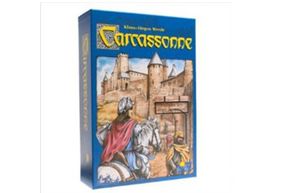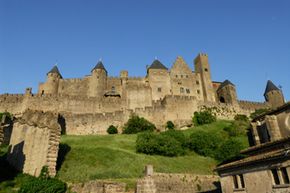They call it a gateway game, and it's not that different from a gateway drug -- that is, a simple product that can, on your very first try, turn into an obsession that leaves you scratching at your skin, shouting nonsensical things about too few meeples left to occupy your precious cloister.
Carcassonne is, on the surface, a rather simple board game. You and your opponent(s) lay tiles that, when strategically placed, form cities, farms, roads and cloisters. To get points, you put tiny wooden game pieces called followers -- or meeples -- on the tiles to lay claim.
Advertisement
So what is it about the game that causes such passionate addiction? Some point to meeples, which have an almost cult following that surely surpasses any rabid fans of, say, Candy Land's Lord Licorice. You can buy custom-made designs (for those who want their camo-painted meeples to blend into the background) and have an award named in their honor (Meeple's Choice Awards, honoring favorite board games), and they've now become a generic identifier of European board games.
Of course, if a board game was mainly popular because of its figurines, nobody would ever play Monopoly. (Who in their right mind wants to represent their competitive gameplay with a thimble or an iron?) Carcassonne -- which won the Spiel des Jahres in 2001, the most prestigious award for game design -- has an allure that seduced Europe and is slowly gaining followers (no pun intended) in the United States.
Board games have been around for at least 5,500 years, the earliest having been found in Egypt [source: Curry]. In general, we use games for entertainment. Along with simply having fun, people get a visceral feeling when they triumph over opponents -- and, on the other hand, when their maniacally competitive sister-in-law crushes them, once again, on the last turn of the game. Either way, all the players are creating a shared experience and memories that create a sense of community, while also giving each person a distinct role as a player [source: Curry].
Advertisement

